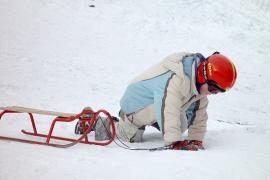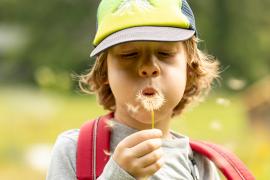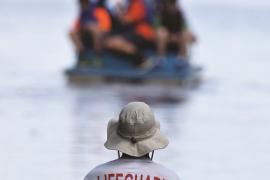In a world driven by communication, the ability to connect deeply and meaningfully with others is more important than ever.
As a camp counselor, your ability to make a significant connection with your campers is one of the most critical skills you bring to camp. Those first few days can be challenging — for you and for the campers. While some kids reunite with old friends, others arrive knowing no one. It’s up to you to create a warm, inclusive environment by using effective conversational tools.
So, how can you quickly build strong connections with your campers while being instrumental in helping campers connect with each other?
This five-day journey provides you with a roadmap for unlocking the secrets of effective conversation using five simple but powerful codes. Each day builds on the last, equipping participants with practical skills to foster authentic connections. The ideas that follow will reveal the magic of transformative activities that bring each code to life.
Day 1: Discovering the Magic of Names
Code 1: Say Their Name
The journey begins with the simplest yet most powerful tool: a person’s name. As Dale Carnegie once said, “A person’s name is, to that person, the sweetest sound in any language” (Carnegie, 1998). Remembering and using someone’s name is the key to grabbing their attention and building a meaningful connection.
Introduce this code during the morning of the first day with a playful icebreaker for your campers. Have them each assign themselves a unique gesture or sign based on their name.
To reinforce Code 1, campers may play Name Bingo or Night Name Whisper games (happycamper, 2025), which repeat each camper’s name and should leave campers feeling acknowledged and appreciated for the contribution they make to the entire experience.
|
Name Games Check out “Fun & Simple Games to Build Camper Connections” at happycamperlive.com/blog/post-detail/fun-simple-games-to-build-camper-connections for more information on how to play Name Bingo, Night Name Whispers, and other games mentioned herein. |
By the end of the day, these activities will help foster a warm, respectful environment that sets the tone for the week. As their camp counselor, guide a group reflection to discuss how hearing their names made them feel and help them recognize the power of acknowledgment.
Adding to the experience, you could encourage campers to create personalized name tags or decorate spaces in their bunk areas with their names. Visual reminders like these not only reinforce the importance of names but also help campers develop a sense of ownership over their space. Additionally, you might consider starting a “name wall” where each camper contributes their name along with a fun fact about themselves. This can serve as both a visual icebreaker and a reference point throughout the week.
Day 2: The Eyes Have It!
Code 2: Eyes, the Aim
Eye contact is a subtle yet powerful tool for connection. As a camp counselor, you can model the importance of using engaged eyes to show interest and build trust.
Start the day with a simple exercise. Pair campers up and ask them to practice maintaining eye contact while saying “Good morning” or sharing something about themselves. While this may feel awkward at first, it teaches them the value of truly seeing and being seen by others.
Throughout the day, introduce a fun Greetings Quest. Encourage campers to greet one another with creative gestures — such as a royal wave or a superhero pose — while maintaining eye contact. This adds energy and playfulness while reinforcing the lesson.
You can also organize activities that focus on nonverbal communication, like “silent charades” or facial expression games. These exercises not only build emotional awareness but also deepen campers’ understanding of how to read and connect with others without words.
For even deeper engagement, consider implementing a “silent lunch” activity where campers communicate only through eye contact and gestures for a portion of the meal. This helps them become more attuned to nonverbal cues and fosters creativity in communication. You can also add a twist to traditional games, such as Simon Says, by making eye contact a required part of the commands. Afterward, facilitate a discussion about how they felt during the activity and what they noticed about their interactions. This creates fun, memorable moments while reinforcing the importance of engaged communication.
Day 3: The Art of Asking
Code 3: Not Every Question Is the Same
By Day 3, your campers are starting to feel more comfortable, which makes it the perfect time to introduce the power of asking thoughtful, open-ended questions. As their camp counselor, you’ll guide them in practicing curiosity and learning how to ask questions that spark deeper conversations.
Campers may start with a curiosity quest by brainstorming three unique, open-ended questions to ask fellow campers. They will practice genuine engagement as they listen to the answers.
Next, create small groups where campers take turns asking and answering open-ended questions, encouraging follow-up questions to keep the conversation flowing. This helps campers move beyond surface-level interactions and discover shared interests or experiences. For example, “What’s something you’ve always wanted to try?” or “What’s a skill you’re really proud of?” Pair them up to practice asking and answering these questions.
End the day with a fun twist: the People Pictures Party. Assign campers a character or role to embody, then challenge them to figure out who everyone is by asking creative and strategic questions. This game reinforces the idea that good questions lead to meaningful discoveries. This fun activity demonstrates how asking questions can shape and deepen interactions — and provide answers to questions they are seeking.
Extend the activity by introducing a “question of the day” throughout the rest of camp. Post an open-ended question on a central board, or announce it during meals, and encourage campers to ask each other throughout the day. Questions such as, “If you could have any superpower, what would it be?” or “What’s the best advice you’ve ever received?” can lead to surprising and heartfelt conversations. Additionally, you can set up a question jar where campers contribute their own questions for the group to explore, adding an element of camper-led curiosity.
Day 4: Listening, the Key to Learning
Code 4: Listening for Words Is Key
Listening is about more than just hearing; it’s about truly understanding. As a camp counselor, you can help your campers become active listeners who pick up on both words and emotions.
Start the day with a game called Listener’s Leap. Pair campers up and have one share a story while the other listens closely, then repeats the story back with an emphasis on emotions and details. This builds empathy and sharpens their attentiveness.
Have campers practice “echoing” during conversations by repeating part of what someone said before responding. This technique shows ways to stay engaged and helps clarify understanding.
For a more energetic activity, try improv games like “Yes, and” or “Overload,” which require participants to listen carefully while under pressure (happycamper, 2025). These games make listening fun and interactive while building valuable communication skills.
Consider adding a reflective listening journal to this day. Ask campers to write down what they learned about someone else during an activity or conversation and reflect on how listening made them feel more connected. Additionally, create a “listening circle” where campers take turns sharing something meaningful while the group practices focused listening. This creates a safe space for vulnerability and mutual respect, strengthening group bonds.
By the end of the day, your campers will have a new appreciation for the art of listening and how it transforms conversations.
Day 5: It’s About We
Code 5: Remembering It’s Not About Me
The final code emphasizes selflessness in conversations. Great interactions focus on making the other person feel valued and heard.
Help campers get off to a selfless start by setting a goal for them to make at least three people feel important by using all the conversation codes learned. They can plan their own specific ways to show interest and care.
Throughout the fifth day, organize a Kindness Quest, where campers perform small acts of kindness for one another — without expecting anything in return. These actions could be as simple as offering a compliment, lending a helping hand, or including someone in a conversation.
A strong way to end is to have campers build a communal story. Each camper adds a part, focusing on supporting and enhancing each other’s contributions. When camp ends with a celebration of the journey, campers will be equipped to extend their newfound conversation skills into daily life.
You can also conclude the day with a gratitude circle. Encourage campers to share one thing they appreciated about another camper or camp counselor. This simple act of gratitude leaves everyone feeling uplifted and appreciated. For a creative finale, consider making a “connection mural.” Provide art supplies and ask campers to contribute drawings or words representing what they’ve learned about connection. This serves as a visual representation of their shared experience and a keepsake for the group to look back on.
By the end of Day 5, your campers will not only leave with stronger conversation skills, but also with a deeper understanding of how to create a positive, connected community.
The Transformative Power of Connection
Through the five conversation codes — names, eye contact, thoughtful questions, listening, and selflessness — you can help your campers become confident, compassionate communicators. These skills will serve them well beyond camp and help to strengthen relationships in every part of their lives.
As a camp counselor, you have the privilege of guiding this transformation. By modeling and teaching these tools, you’re creating a camp environment where every camper feels seen, heard, and valued. The connections you help foster don’t just impact the campers — they create a ripple effect that extends to their families, friends, and communities. This week of intentional connection-building can shape the way they approach relationships for years to come.
By investing in these practices, you’re helping campers have a great start to their summer, and you’re empowering them with life-changing skills. The magic of connection starts with you — and it will continue to ripple outward through every camper you inspire.
Photos courtesy of Camp Friendship, Palmyra, VA.
|
Discussion Questions
|
References
Carnegie, D. (1998). How to win friends and influence people. New York, NY: Pocket Books.
Happycamper. (2025). Fun & simple games to build camper connections. Happy Camper Live. happycamperlive.com/blog/post-detail/fun-simple-games-to-build-camper-connections
Jackie Bailey is the founder and director of The Speak Feed Lead Project. Her nonprofit increases communication, confidence, and creativity for youth and adults through clubs, masterminds, retreats, and coaching. Hundreds of kids as young as 10 are speaking on TEDx stages, giving keynotes around the world, and becoming best-selling authors because of Jackie’s influence. She has provided breakout sessions and workshops to several local and regional ACA events since 2023.
Allison Miller is a seasoned summer camp director with 25 plus years of experience at Camp Starlight in Northeastern Pennsylvania. She is the CEO and founder of Happy Camper Live, a platform dedicated to bringing the magic of summer camp to kids all over the world 365 days a year. Allison is also an American Camp Association (ACA) standards lead visitor and ACA mentor, recognized for her contributions to the field of summer camp. Through her innovative programs, activities, and coaching, she has transformed the way children and families experience camp, fostering connection, creativity, and joy in every season.



